- News
- Reviews
- Bikes
- Accessories
- Accessories - misc
- Computer mounts
- Bags
- Bar ends
- Bike bags & cases
- Bottle cages
- Bottles
- Cameras
- Car racks
- Child seats
- Computers
- Glasses
- GPS units
- Helmets
- Lights - front
- Lights - rear
- Lights - sets
- Locks
- Mirrors
- Mudguards
- Racks
- Pumps & CO2 inflators
- Puncture kits
- Reflectives
- Smart watches
- Stands and racks
- Trailers
- Clothing
- Components
- Bar tape & grips
- Bottom brackets
- Brake & gear cables
- Brake & STI levers
- Brake pads & spares
- Brakes
- Cassettes & freewheels
- Chains
- Chainsets & chainrings
- Derailleurs - front
- Derailleurs - rear
- Forks
- Gear levers & shifters
- Groupsets
- Handlebars & extensions
- Headsets
- Hubs
- Inner tubes
- Pedals
- Quick releases & skewers
- Saddles
- Seatposts
- Stems
- Wheels
- Tyres
- Health, fitness and nutrition
- Tools and workshop
- Miscellaneous
- Buyers Guides
- Features
- Forum
- Recommends
- Podcast
review
£266.00
VERDICT:
Modular and customisable crankset offers good performance
Weight:
594g
Contact:
At road.cc every product is thoroughly tested for as long as it takes to get a proper insight into how well it works. Our reviewers are experienced cyclists that we trust to be objective. While we strive to ensure that opinions expressed are backed up by facts, reviews are by their nature an informed opinion, not a definitive verdict. We don't intentionally try to break anything (except locks) but we do try to look for weak points in any design. The overall score is not just an average of the other scores: it reflects both a product's function and value – with value determined by how a product compares with items of similar spec, quality, and price.
What the road.cc scores meanGood scores are more common than bad, because fortunately good products are more common than bad.
- Exceptional
- Excellent
- Very Good
- Good
- Quite good
- Average
- Not so good
- Poor
- Bad
- Appalling
Stiff and solid with a sleek finish and modular design boosting impressive versatility and adaptability, the Rotor Vegast is a good upgrade from a cheaper crankset or an interesting option if you're building your own bike.
- Pros: Wide compatibility, future-proofed, nicely made, looks good, stiff
- Cons: A tiny bit pricey compared to some rivals
The Vegast is one of two new modular cranks launched by the Spanish company perhaps best known for its oval chainrings. To remind everyone of its involvement in pro cycling, this crankset is named after three iconic European climbs, the VEleta, GAlibier and STelvio, featured in each of the Grand Tours the company has tasted victory.
> Find your nearest dealer here
It's the most affordable crankset Rotor offers using its new modular design concept first shown on the Aldhu a couple of years ago. The design offers two benefits: customisation and compatibility. The cranks can be fitted to most bottom bracket types (BB30, BB386, BBRight, BSA, ITSA, PF30, PF4130, UBB4630) and you can choose one or two chainrings, allowing you to easily get the correct setup for your needs.
Everything Rotor makes is machined from aluminium at its Spanish facility. The more expensive Aldhu cranks are CNC machined, while to keep the price down the Vegast arms are forged from 6082 aluminium. Despite that difference, they are beautifully made with a certain industrial appearance about them and finished to a very high standard with nicely understated graphics.
To save weight, excess material has been removed from the cranks using the company's Trinity Drilling System – three internal holes from axle to pedal that both reduce weight and increase stiffness. Rotor offers three crank lengths: 170, 172.5 (tested) and 175mm. The q-factor (the distance between the pedals, measured from the outside of the cranks) is 148-153mm depending on the axle you use.
The chainring is made from one piece of aluminium and features narrow/wide teeth profiling to minimise the risk of the chain falling off on rough terrain. There's a range of sizes from 38t at the smallest up to 54t for the biggest; I tested a 42t for road and gravel riding. There are also non-round Q Rings in the same sizes as well, but I prefer my rings round.
Vegast only comes with a 30mm bottom bracket – the more expensive Aldhu can be had with a 24mm axle option. The axle is similarly machined from aluminium and you can get all the necessary spacers you need to fit it to your bike. Rotor will supply a suitable bottom bracket to fit the 30mm axle to a 68mm threaded bottom bracket shell.
Weight on my scales is 369g for the cranks, 88g for the 42t chainring and 85g for the axle. Add the weight for a bottom bracket, an FSA BB386 in my case at an additional 52g, and you're looking at 594g in total.
I opted for a 1x setup for my Fairlight Cycles Secan, with a 42t single ring and that FSA BB386 bottom bracket I had spare to fit the oversize axle to the 68mm external threaded bottom bracket on my frame.
Installation was easy. You assemble the cranks, chainring and bottom bracket axle as per the instructions, fit it to the frame, make fine adjustments with the preload collar on the non-drive side, and off you go. It really couldn't be easier.
The chainring uses a splined interface to connect to the crank, the sort of design that a few other manufacturers are starting to embrace. This provides a modular design that does futureproof the crankset. Should I want to swap the chainring, or even add a second chainring, or upgrade the cranks, it's a straightforward operation and avoids having to buy a completely new crankset.
For the past few months that I've been testing this crankset it's gone about its business without fuss. The chain hasn't dropped once, the cranks haven't come loose, and regular inspection has revealed no need for any adjustment. It really is a case of fit-and-forget, just as it should be.
Stiffness is very good, too. I certainly wasn't able to detect any lack of power transfer when putting out as many watts as I could muster (which isn't many), but testing crank stiffness is very tricky this side of a dedicated testing rig. You're certainly not going to feel shortchanged if upgrading from a cheaper crankset to these and they compared favourably to other cranks from Shimano, SRAM and Praxis that I've been riding during the time I've been spinning the Rotors.
Durability has been fine as well. The crankset has endured a lot of use, mostly of the off-road variety, exploring my local bridleways and byways around the Cotswolds. I've noticed a few scuffs on the matt aluminium finish but they have cleaned out, and since I don't pedal with a heel-in style I've not experienced any permanent scuff wear issues as some riders can.
Rivals
Priced up, the configuration I tested costs £266 sans bottom bracket. That's quite a lot cheaper than the Aldhu setup at £379, and less than the Praxis Zayante Carbon direct mount chainset tested previously, though you are getting carbon for the extra bling factor.
If you have your heart set on carbon, then SRAM's Force 1 crankset provides carbon cranks with a wide choice of single ring sizes for £248 RRP, but shopping around reveals a price of about 200 notes.
> Read more road.cc reviews of chainrings and chainsets here
Perhaps the main rival is the crankset you already have fitted to your bike. You're going to buy this if you want to upgrade from a cheaper crankset on your current bike, or you're speccing your own bike and want to choose something a bit different. The wide compatibility and modular adjustment is a big factor to consider and a definite advantage over a Shimano or SRAM crankset.
Fitting is a doddle, and the ability to spec the chainset to suit your exact needs, and have the option to easily change the configuration at some point in the future should your needs change, is a big bonus.
Verdict
Modular and customisable crankset offers good performance
road.cc test report
Make and model: Rotor Vegast 1x crankset
Size tested: 42t
Tell us what the product is for and who it's aimed at. What do the manufacturers say about it? How does that compare to your own feelings about it?
Rotor says, "When dreaming up the new Vegast cranks, we thought it only appropriate to pay tribute to ROTOR's racing heritage, and commemorate our three historic victories of the Grand Tours - Tour de France (2008), Vuelta España (2011) & Giro Italia (2012). Honoring three of the highest climbs of these iconic races, the Vegast is named after the Veleta, Galibier, and Stelvio, with an understanding of the sheer power and stamina needed to take on the steepest climbs of cycling.
"Much like our new Aldhu crankset, the Vegast is designed with a modular system, that allows you to select each crank component based on your unique bike setup and physical characteristics and includes both Road & Track versions. Choose your set-up from ROTOR's one-piece Direct Mount Q RINGS® or Round chainrings, or classic spider with oval or round chainrings.
"Our Direct Mount technology features a proprietary spline interface connecting crank arm, axle and chainring allowing you to easily assemble and disassemble your crankset with only one bolt. Combined with Q rings, OCP mount technology allows you to adjust your Optimal Chainring Position (OCP) to within one degree increments to precisely configure your unique OCP to maximize power output to your distinct pedaling style.
"Crafted using expert CNC processes, Vegast includes our Trinity Drilling System, with three internal holes from axle to pedal, giving the dual benefit of an exceptionally light crank with superior stiffness to take on the most challenging rides."
Tell us some more about the technical aspects of the product?
From Rotor:
Weight: 375g (170mm), 655g (170mm, road axle, 50/34DM Q rings)
Lengths Available: 170, 172, 175
Spindle Size: 30mm
Compatible with: BSA, ITA, BB86, BB30, BB30A, PF30, BBRight, BB386 Evo
Rate the product for quality of construction:
8/10
Rate the product for performance:
8/10
Rate the product for durability:
8/10
Rate the product for weight (if applicable)
7/10
Rate the product for value:
5/10
It's not the cheapest upgrade but nor is it the most expensive.
Tell us how the product performed overall when used for its designed purpose
Provides good performance, being stiff and light.
Tell us what you particularly liked about the product
Fitting is a doddle and the ability to spec the chainset to suit your exact needs, and have the option to easily change the configuration at some point in the future should your needs change, is a big bonus.
Tell us what you particularly disliked about the product
A bit pricier than some rivals.
How does the price compare to that of similar products in the market, including ones recently tested on road.cc?
It's a little dearer than some; at retail it's a bit more money than a SRAM Force 1 crank with carbon arms.
Did you enjoy using the product? Yes
Would you consider buying the product? Maybe
Would you recommend the product to a friend? Yes
Use this box to explain your overall score
Smart modular design lets you easily customise the crankset for your needs, it's stiff and light and looks good. Overall, it's very good.
About the tester
Age: 31
I usually ride: My best bike is:
I've been riding for: 10-20 years I ride: Every day I would class myself as: Expert
I regularly do the following types of riding: road racing, time trialling, cyclo-cross, commuting, touring, mountain biking
David worked on the road.cc tech team from 2012-2020. Previously he was editor of Bikemagic.com and before that staff writer at RCUK. He's a seasoned cyclist of all disciplines, from road to mountain biking, touring to cyclo-cross, he only wishes he had time to ride them all. He's mildly competitive, though he'll never admit it, and is a frequent road racer but is too lazy to do really well. He currently resides in the Cotswolds, and you can now find him over on his own YouTube channel David Arthur - Just Ride Bikes.
Latest Comments
- David9694 1 hour 2 min ago
I cling on to the notions drivers/ people verbalise like "wasn't Center Parcs lovely" and "I've got no choice" in the hope that they may one day...
- brooksby 1 hour 17 min ago
Ah, but the terrorists build their invisible bases under those hospitals and refugee camps, and some of those children are just really short adult...
- chrisonabike 1 hour 28 min ago
Am I right in thinking that this has been the case in NL for over half a century (or 30 years nationally)? With a brief interruption from 2003 -...
- Bezzard74 1 hour 34 min ago
100% agree on all points! ...
- cyclisto 1 hour 40 min ago
I think this mostly....
- chrisonabike 2 hours 25 min ago
A good point - cyclists are somewhere between pedestrians and motorcyclists (a few - electric motorcycles mainly, which are not legal) in terms of...
- Rendel Harris 4 hours 38 min ago
Welcome - probably didn't show as they tagged it "not near miss of the day"?
- David9694 11 hours 58 min ago
Cambridgeshire boy, 13, crashes Audi into garden wall after taking it from home...
- mattw 16 hours 41 min ago
Used car salesman is a complete attention-seeking plank....















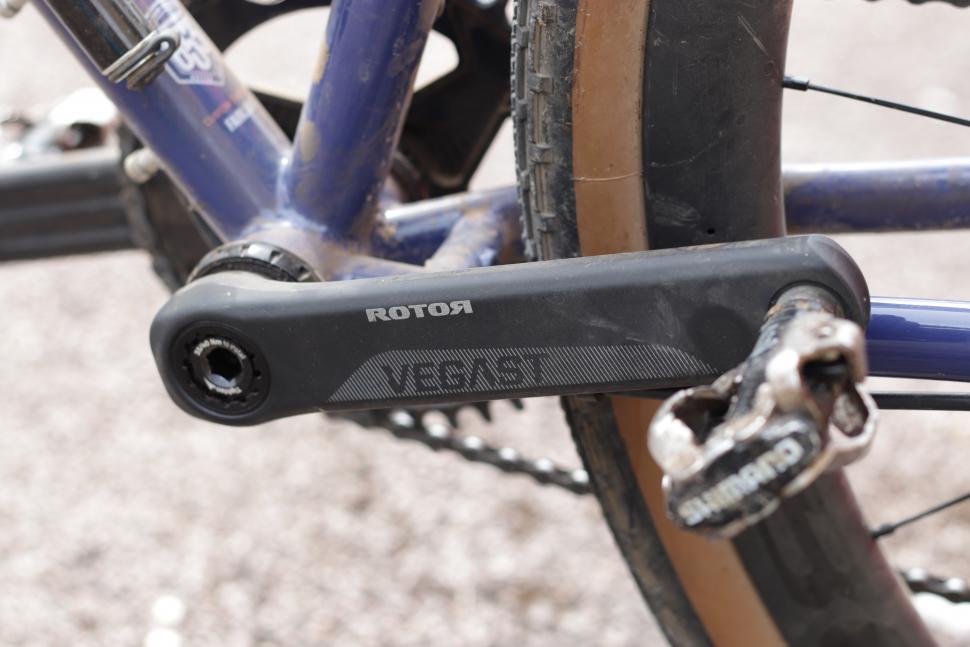

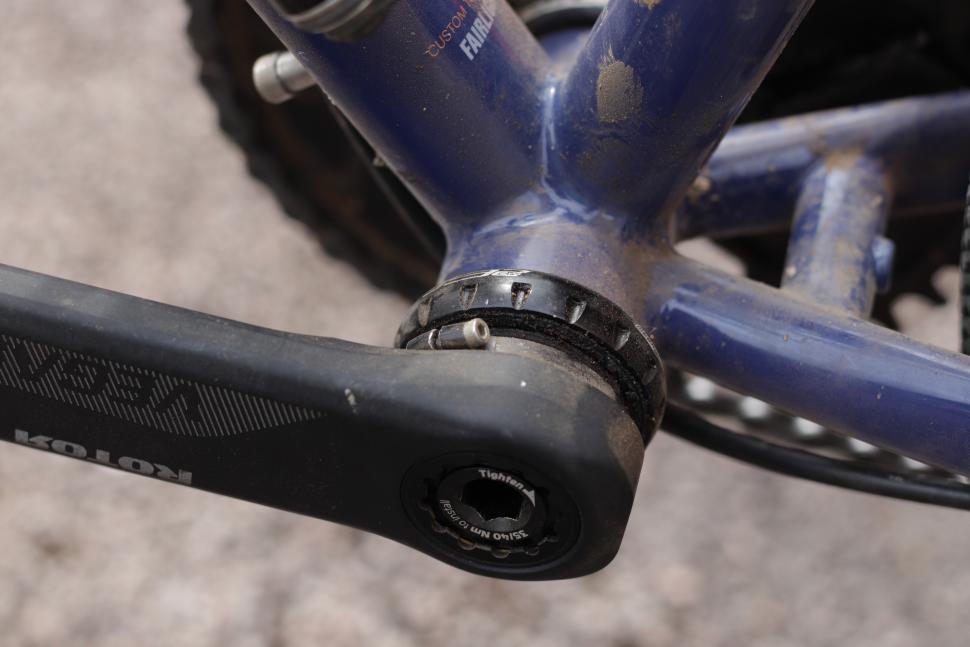

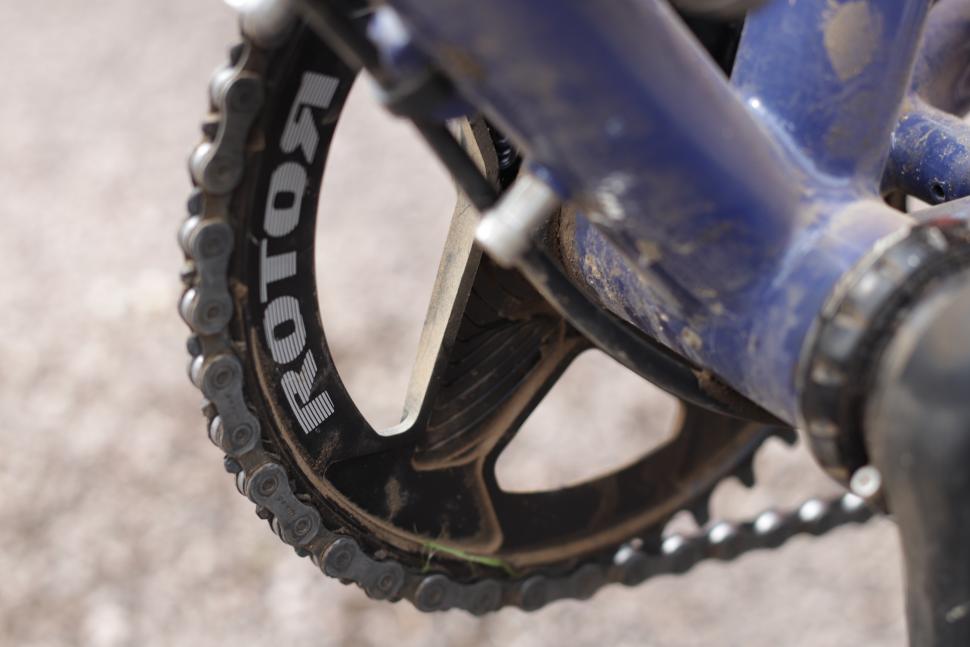


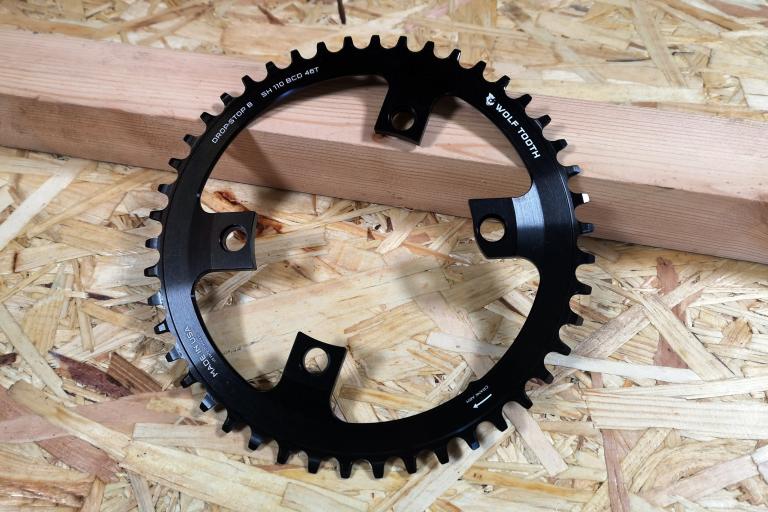
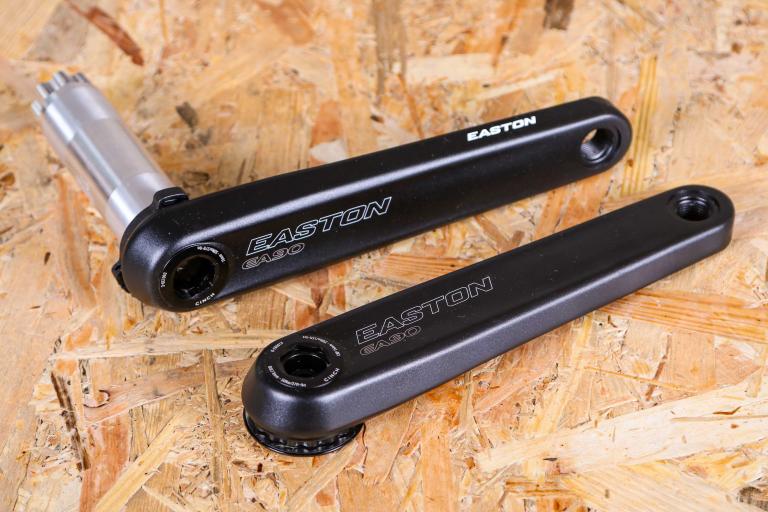
Add new comment
11 comments
What’s nice is that the axle is separate from the crank arms, so you can choose 24mm or 30mm axles in different chainline versions.
Depending on your budget you can go for the cheaper vegast arms or pay extra for the lighter aldhu arms.
09B5D2B6-E330-46C3-BD1D-5695B0CE633F.jpeg
This crankset is compatible with any standard 30mm or 24mm bearing standard. Since you buy the axle separately you can choose a 30mm or 24mm axle.
I swap mine (with a 30mm axle) between a bike with a BSA BB and one with a T47 BB.
I don’t think the splines are compatible with other systems as they were developped initially to make the use of Rotor’s oval chainrings easier.
You can also get a spider that mounts on the splines to which you can attach chainrings. Chances are only Rotor chainrings will fit but maybe a spider for standard chainrings will appear.
That being said... the range of available chainrings from Rotor is quite big... 1x, 2x directmount one piece, 2x separate ones for use with a spider all in round and oval versions.
The modularity of this crank is really nice.
I use it in a 2x setup on my 'allroad' bike; a custom steel bike with a road-endurance geometry which can take both 700c wheels and 650b/47 (aka 'road plus') wheels.
I can easily switch between a one-piece 50/34 direct mount chainring for road rides and a 46/30 one when I put on my 650b wheelset and go offroad. What makes this swap very fast is the fact that the chainring slides on to the splined interface on the axle and is held in place by simply reattaching the driveside crankarm to the axle with one bolt.
All I need to do then is slide the front derailleur up or down on the braze-on and within 5 minutes I am ready to go (since I have Di2, I don't have to readjust the front derailleur cable tension).
What is also nice is that when removing the crankset for travelling, the arms and axle are separate parts and are easier to pack inside the bikebox.
I'm quite puzzled by the mechanical design of this crankset.
Rotor have gone for a four-arm spider design, but the position of the spider is 90 degrees rotated from where Shimano puts them.
Shimano claimed that their design improved stiffness by aligning the spider arms so the teeth carring the highest load are best supported at the point in the pedal cycle with the highest force, ie roughly when the cranks are horizontal.
Rotor have done exactly the opposite - the system is stiffest at the point when the loads are lowest.
If this actually matters, then Rotor have got it wrong. If it doesn't, then Shimano's claims are bunkum.
Triumph of form over function?
Triumph of marketing bs and product differentiation over science?
Think the science will be different between these and the Shimano as this is attached directly to the axle rather than having chainring bolts
It's physically impossible to increase stiffness merely by removing material. Doing so will always reduce the second moment of area.
Dammn, that's the kind of absolute statement that just gets me interested! I'd be interested to hear from someone truly qualified on this topic, and I your statement may well be true - but the article doesn't state that ONLY material was removed.
It would seem that you can reduce the overall amount of material, but still increase stiffness, by making holes, but it it isn't JUST a hole:
https://www.popsci.com/diy/article/2009-12/use-shapes-strength
It may therefore be that not enough information has been provided on the manufacturing of said holes to allow us to make a firm judgement on this?
For some reason I can't access that page, but the statement that you can reduce material and increase stiffness through the use of shaping is true -- the relevant measure is the second moment of area as I mentioned (http://mathworld.wolfram.com/AreaMomentofInertia.html ). I-beams make use of this -- as do bike tubes, because the material furthest from the bending axis is the most critical and removing material close to this axis has little overall impact. But just putting holes in a shape will never increase the stiffness.
I don't know much about material science, but a quick search brings up https://en.wikipedia.org/wiki/Lightening_holes
Also, there's loads of graphs and experiments detailed here: https://ntrs.nasa.gov/archive/nasa/casi.ntrs.nasa.gov/19930093371.pdf
Adding holes can increase "strength" by preventing cracks from spreading (i.e. when a crack reaches a hole, it stops), but whether that would count as increasing the stiffness, I do not know.
"Strength" has a particular meaning in materials science (the yield stress, or ultimate tensile stress, depending on context) but yes, holes can stop crack growth by blunting the crack tip and hence reducing the associated stress multiplication factor. This generally helps against cyclic fatigue failure, and is the reason that aircraft windows are round (look up the Comet failures), and why riveted joints are still used (the rivet holes can act as crack blunting mechanisms if the joint starts to fail) in some applications. It doesn't increase stiffness though.